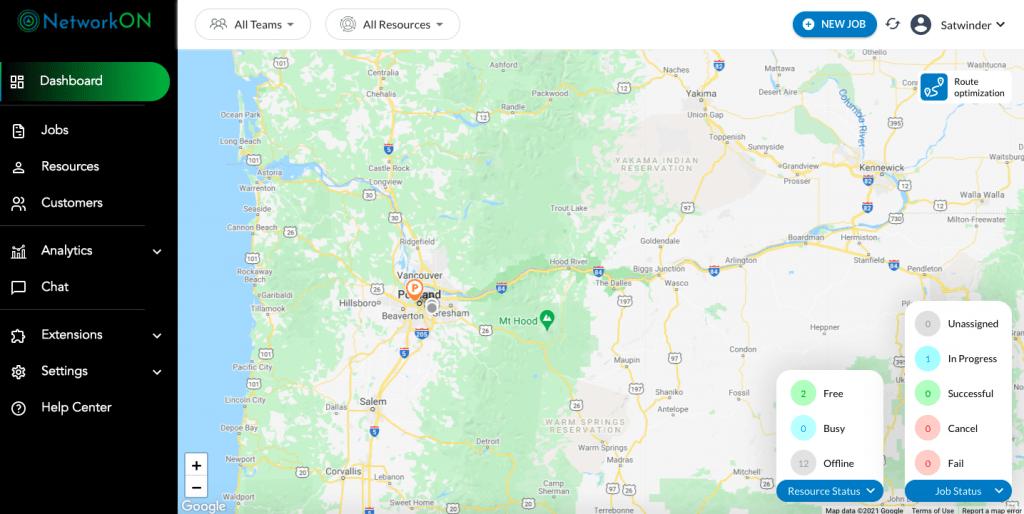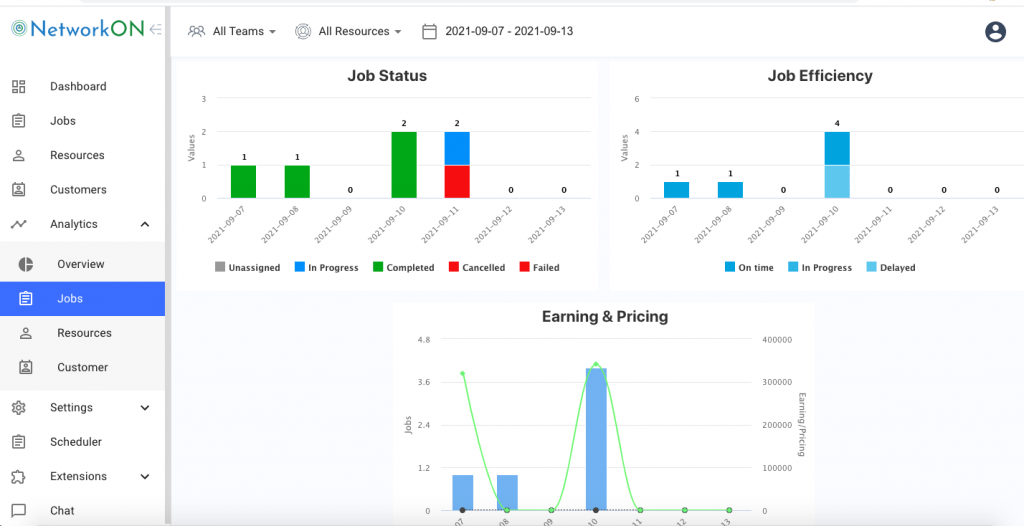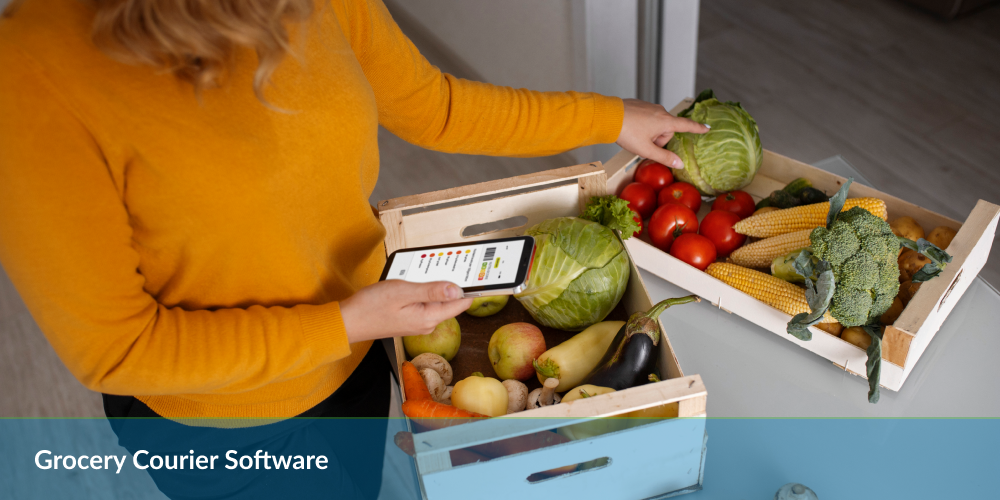Table of Contents
Customers have an ever-increasing need for instant gratification, fast shipping, and quick delivery, making last-mile delivery a complex and challenging task.
Our guide is here to help you make the best decisions to optimize your last-mile delivery infrastructure. Let us look at what makes up a successful last-mile delivery business, including best practices and the best solution for your business. .
What is Last-Mile Delivery?
Last-mile delivery is transporting goods from a distribution center to their final destination. It is a term used in logistics, supply chain management, and transportation.
The last mile problem refers to the challenge of delivering goods to consumers. It is often the most expensive and time-consuming part of shipping. In some cases, companies find it more cost-effective to ship products to a distribution center near major cities or towns. They are then transferred to smaller trucks that can deliver them directly to customers’ homes or businesses.
Some companies use online grocery delivery services like Amazon Fresh and Instacart as alternatives to last-mile delivery. These services allow customers to order food online and deliver it directly from local stores when it’s ready for pickup.
Delivery services like FedEx Ground and UPS Mail Innovations also offer delivery options for businesses that don’t wish for the hassle of dealing with individual packages.
Why Is Last-Mile Delivery Important?
Offering seamless last-mile delivery is critical to the success of eCommerce retailers. The Last-Mile helps to ensure that online orders are delivered quickly, efficiently, and cost-effectively. While last-mile delivery may seem like an afterthought, it’s a crucial part of the supply chain.
Here Are the Key Reasons Why You Should Consider Last-Mile Delivery:
1. Increased Customer Satisfaction
Shipping costs are one of the major factors consumers consider when shopping online. They want their orders to be delivered quickly, efficiently, and cost-effectively. If shipping costs are high, your customers are more likely to purchase from competitors. By offering free or low-cost last-mile delivery options, you can help increase customer satisfaction with your business.
2. Increased Revenue Potential
Offering free or low-cost last-mile delivery options for some products can help increase revenue potential by allowing customers to spend more on other items in your store.
For example, if you offer free shipping on all orders over $100, your customers are more likely to purchase more than one product at once (so they don’t have to pay shipping costs on multiple items).
Top Trends in Last-Mile Delivery
Last-mile delivery is a critical part of the e-commerce value chain. It refers to the final leg of an order’s journey, where it leaves the warehouse and reaches its final destination — whether that’s a customer’s home or office.
The last mile has always been challenging for retailers. But today’s consumers demand speed and convenience more than ever before, forcing retailers to find new ways to shorten delivery times and improve customer experience.
Let’s take a look at some of the top trends in last-mile delivery you can expect to see in 2022 and beyond:
1 Rise of Drones as a Last-Mile Solution
Innovations in drone technology allows companies to use drones as a last-mile solution for delivering goods to customers. This includes Amazon’s Prime Air service, which has been testing drone delivery for some time now. The company has already made its first commercial delivery via drone in Britain and has plans to launch drone deliveries in the U.S. soon. Other companies, such as Walmart, are already using drones to deliver packages to customers within their local area (in this case, inside their stores).
2 Emergence of Autonomous Vehicles
The emergence of autonomous vehicles is a big deal for many reasons. The impact on last-mile delivery will be enormous. It’s expected that soon we’ll see more and more companies using self-driving cars for deliveries. Thus, it will allow them to be more efficient and save on costs simultaneously.
3 Increasing Use of Blockchain Technology
Blockchain technology has taken the world by storm, and it seems like it’s only going to get bigger from here on out. The technology was created to support cryptocurrency transactions, but it can be used for other applications, including logistics. It’s already being used by some companies who are looking to track their goods in real-time through blockchain-powered supply chains.
4 Increase in Mobile Apps for Last-Mile Deliveries
The increased use of mobile apps has made last-mile delivery a lot easier. Delivery companies provide their agents with a user-friendly Agent app to manage their day-to-day tasks. Thus increasing their productivity and improving employee experience.
5 Robotic Couriers
Robotic couriers are a new trend making their way into last-mile delivery services. These robots are being developed by companies like Amazon and Google and can deliver packages straight to your doorstep. Although these robots were originally designed for warehouses, they have now started being used for last-mile deliveries.
6 Artificial Intelligence
Artificial intelligence is one of the biggest buzzwords in technology right now, but with good reason. It can help automate tasks that humans would normally have to do manually, and it helps improve efficiency and accuracy. AI could also be used to optimize delivery routes by learning and adapting to traffic patterns.
Critical Challenges Associated with Last-Mile Delivery?
Let us look at the top five challenges associated with last-mile delivery:
1. The Need for Real-Time Tracking
Tracking shipments is a crucial part of last-mile delivery because it ensures that packages arrive safely at their destination. However, tracking systems can be inefficient. One survey found that 83 percent of respondents said they would like real-time visibility into where their packages are during transit. This can be accomplished through a cloud-based platform that allows users to track shipments in real-time via an app or website.
2. The Need for Visibility Into Every Step of the Process
Lack of visibility of delivery operations is another challenge faced by last-mile delivery businesses. For example, suppose an agent meets with an accident or their vehicle breaks down. Customers need to be notified of the delay immediately.
3. The Need for Flexibility
Customers expects on-time deliveries. But when you’re dealing with a wide range of products that are heavy and/or fragile or require to be delivered at remote locations then you have to deal with a lot more complex than ever before.
4. The Need for Consistency and Reliability
When it comes to last-mile delivery, customers want consistency and reliability. If they order something online and expect it in two days or even one day, they’re not going to be happy if it doesn’t arrive on time — especially if they paid extra for fast delivery! That’s why it’s important to provide consistent service levels across different geographies and routes; this way, your clients will be able to know what to expect every time they order something from you.
5. The Need for Cost Efficiency
The cost of delivering products has been rising over time as retailers try to find ways to cut costs while also making sure they’re offering customers a high-quality service.
How to Manage Last-Mile Deliveries?
Many companies are now offering last-mile delivery services to help with their logistics. But to be successful, you need to have a good system in place. Here are five tips for managing last-mile deliveries:
1. Increase Agent Productivity with Mobile App
Your agents manage various activities from navigating to multiple locations to maintaining checklists and collecting proof of delivery. Offer agents a user-friendly mobile app that will eliminate paperwork, and provide optimized routes and real-time customer updates. This, in turn, improves employee experience and helps your agents to make on-time deliveries.
2. Automate Dispatch and Order Assignment
Map orders to agents based on skill and vehicle type. You can create tags for your agents. This helps to automatically assign orders to the right agent without manual intervention.
3. Leverage a Centralized Dashboard
Retailers need to keep track of all their shipments if you use multiple carriers, spreadsheets just won’t cut it anymore. You’ll need a centralized dashboard like NetworkON that allows retailers to see where products are in transit and which ones have arrived at their destination. This gives retailers greater visibility into their supply chain, allowing them to make adjustments if anything goes wrong with shipping schedules or delivery times.
4. Control Your Supply Chain by Integrating with an ERP/Ecommerce Platform
Another way to manage last-mile deliveries is by integrating your supply chain management software or ERP system with an eCommerce platform like Shopify or Magento. This gives you access to real-time data about inventory levels, shipment statuses, shipping costs, and more to make informed decisions throughout the entire process.
How Can NetworkON Help Scale Last-Mile Delivery Businesses?
NetworkON is an AI-driven delivery management software that helps you stay connected with your delivery network. It allows you to manage your deliveries through a single platform and deliver them faster. NetworkON enables you to reduce the cost of transportation and improve customer satisfaction.
With NetworkON, you get:
#1 Single Dashboard to Manage Your Delivery Operations
Gain a 360-degree view of your delivery operations in a single dashboard. Track agents in real-time, view delivery performance and manage orders and payments using NetworkON’s admin dashboard. You can create roles for managers to access the necessary features.

#2 Real-Time Insights Into Their Performance, Efficiency, and Other Metrics:
You get real-time insights into how each vehicle is performing — whether in terms of speed, fuel consumption, delivery time, and other metrics. This enables you to make decisions about routing optimization and the fleet maintenance plan for your vehicles more effectively.

#3 Automated Routing and Route Optimization Using Machine Learning Algorithms:
NetworkON’s route optimization technology considers historical account data and real-time traffic conditions to provide optimized routes for your drivers. This ensures that your drivers are always on the move, delivering goods to your customers. This also helps reduce fuel costs and CO2 emissions by reducing the idling time of vehicles during route optimization.
To know more about how this software works, it is best to opt for a FREE Demo.
The Bottom Line
The key to developing a successful last-mile delivery management strategy is understanding what your customers want from each delivery process step. By focusing on the certain needs of your customers and continually improving aspects of the delivery experience, you will likely improve your customer retention rates.
If you want to scale your last-mile delivery business with Network ON then don’t forget to talk to our experts today.





0 Conversations